
Several decades ago, traditional businesses were organized quite differently. Your competitors were humans, and the fierce competition was between people. But nowadays, more and more technology comes into play, and those who welcome digitalization and automation in the travel industry have more chances to emerge a winner. Now, it’s the competition between the levels of digitalization, and not so much about humans, although people still manage all these processes. With travel technology trends ever-changing, success will come to the most flexible and adaptable.
In this piece of writing, we are going to talk about the practical implementation of digital transformation for tour operators, DMCs, OTAs, and any other business engaged in selling tour products and services.
The present-day hardware comes with ever greater computational powers. The Internet speed may reach as high as 250 Mbps. As good as it feels, the pace of digital transformation in the travel industry is not that high as one can imagine. Upon closer inspection, we may identify a few obstacles slowing the processes down. What holds back digital innovation in the travel industry? There are two major challenges we would like to highlight here.

Let us show you how we can transform your travel business into its better digital version.
What has happened during the past years? Tech people started to automate as much as possible and create software solutions for virtually every aspect of life and work alike.
Let’s consider a hypothetical travel company as an example. First, we set out to 1) automate CRM. We go and find a CRM solution on the market and install it at our company. Then, we want to compete with internet booking agents and look for 2) the best online booking engine for travel agencies. At the next stage, we learn the idea that websites should be very marketing-oriented and install 3) a CMS solution accompanied by 4) a website management solution. The list goes on and on. By the end of this story, it becomes really hard to manage all these solutions without data duplication, let alone onboarding difficulties during high-load seasons.
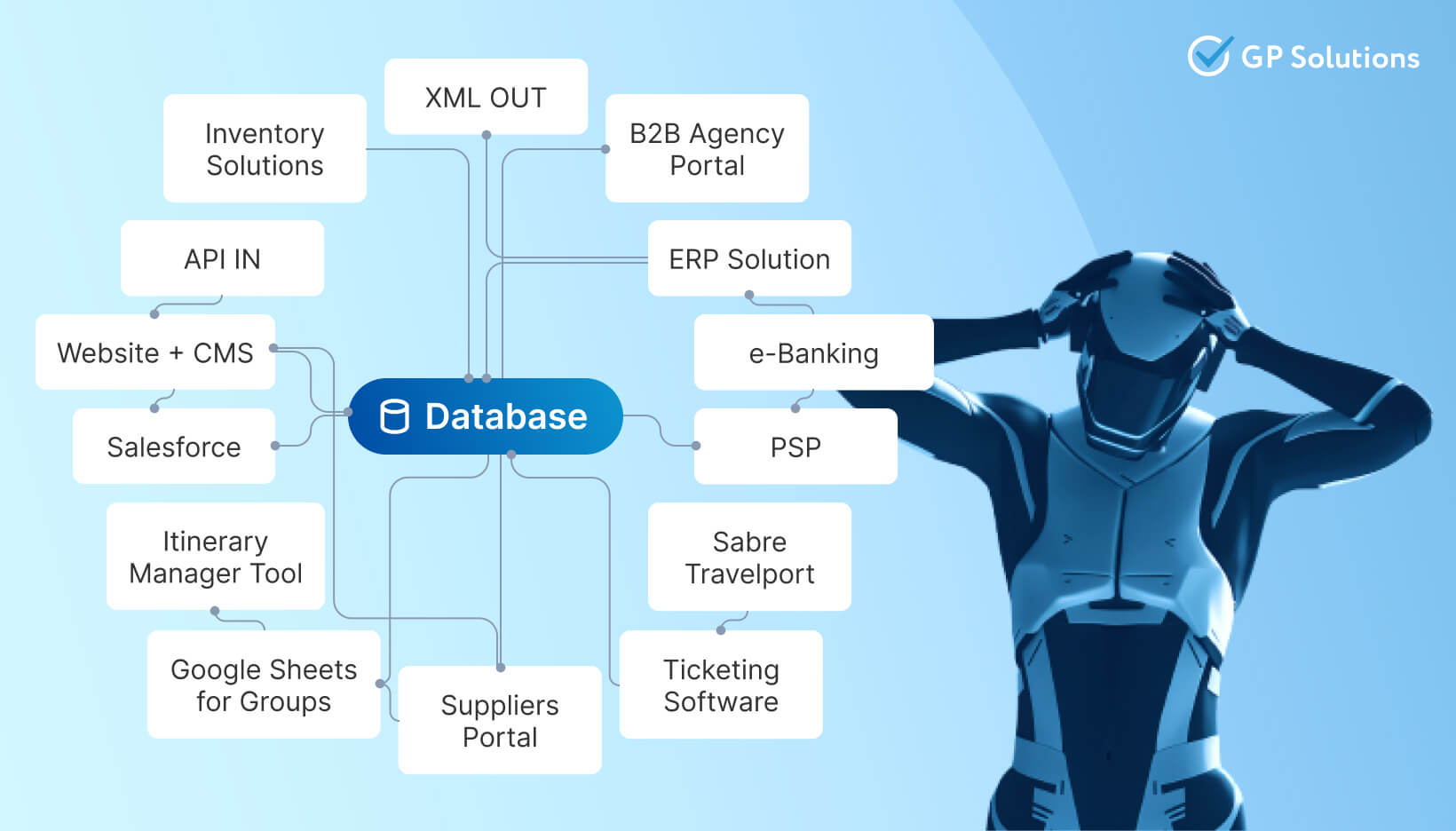
Not all software is created equal. Some pieces are advanced and have ample room for integrations, API connections, and much more, while others may be a desktop application with an outdated interface, limited functional capabilities, and no potential to grow with your business. These disparities need to be considered when you design a transformation map for your business.
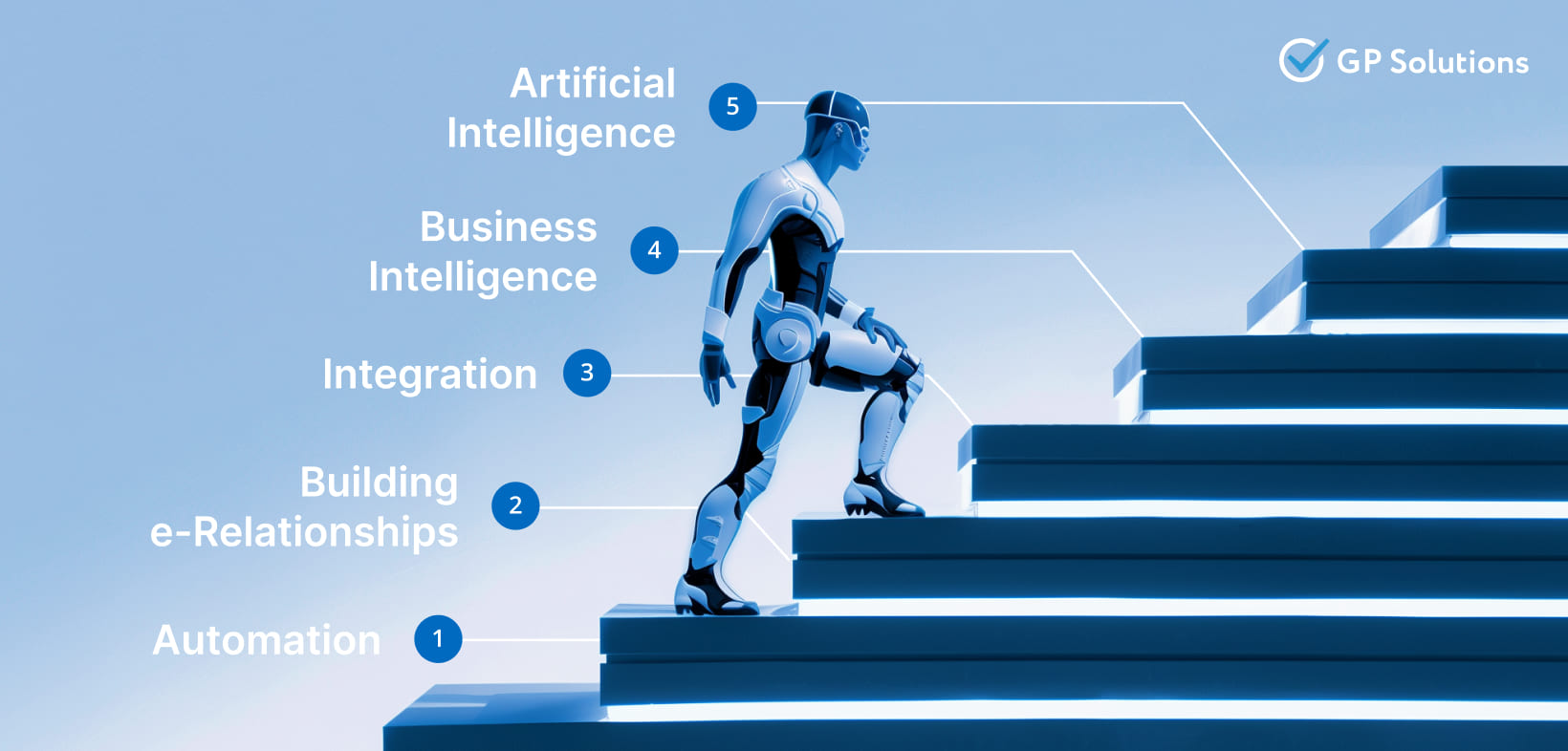
This five-step process may serve as a guideline for evaluating your business’ digital maturity and identifying steps towards further transformation.
Let’s go down this journey in more detail.
Automation may account for only 20% of your success, but it is the foundation you can’t escape to move further. Automation covers all the processes within your own company, yet when evolving ineffectively, digitalization processes may breed havoc. Data duplication and disjointed systems, with some parts automated and some requiring manual input, are a “quiet hell” of your employees, since they are forced to toggle between multiple screens. For instance, when they make a booking, they need to copy this booking data into Excel to provide for the accounting system — a clear case of redundant data entry and a prerequisite for error inputs.
The ideal solution to these issues would be very straightforward software to cover five major parts of the travel agency’s business.
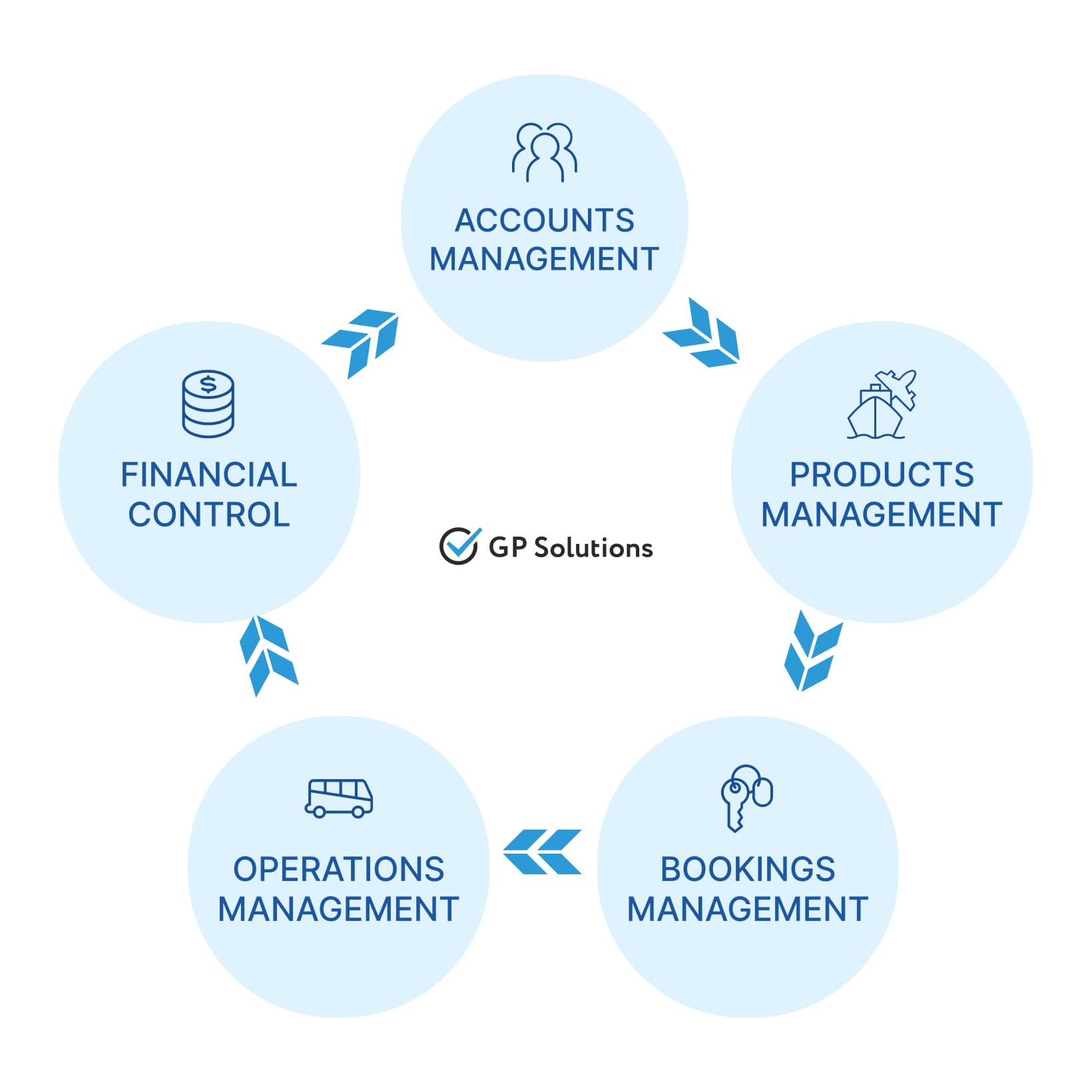
In a perfect world, you should be able to open just one screen and gain access to all critical account data in a centralized travel booking management system. An optimal solution would provide you with:
You may have the widest range of available products, but if you do not store the information about all of them (hotels, transfers, activities, etc.) in one place, that’s going to undermine all your selling efforts.
Our experience shows that it would be wise to accompany all your products with three obligatory categories of information — descriptions, prices, and availability. Why so? It’s a common case when the upload of the information about products to the company’s website involves several people taking care of different data categories. To harmonize all that and to avoid misinformation, you need to create a single entry point with all the information available per one click.
All potential bookings — be it a quotation for a client, a booking made online by travelers, or a reservation by a travel agency — should be processed via a single travel booking management system. The same applies to group management and FIT (Fully Independent Travelers) bookings. Your database should be a unified storage place for all your bookings so that your employees can access, edit, and manage them with no risk of duplications, missing information, or miscommunication with clients.
This part is of special importance for DMCs and other operators who actually supervise a product. Just like we discussed above, operations management should be integrated in one system to provide details and updates for each group tour, transfer, or activity. Such functionality is attainable within one solution.
Operations Management sample from GP Travel Enterprise
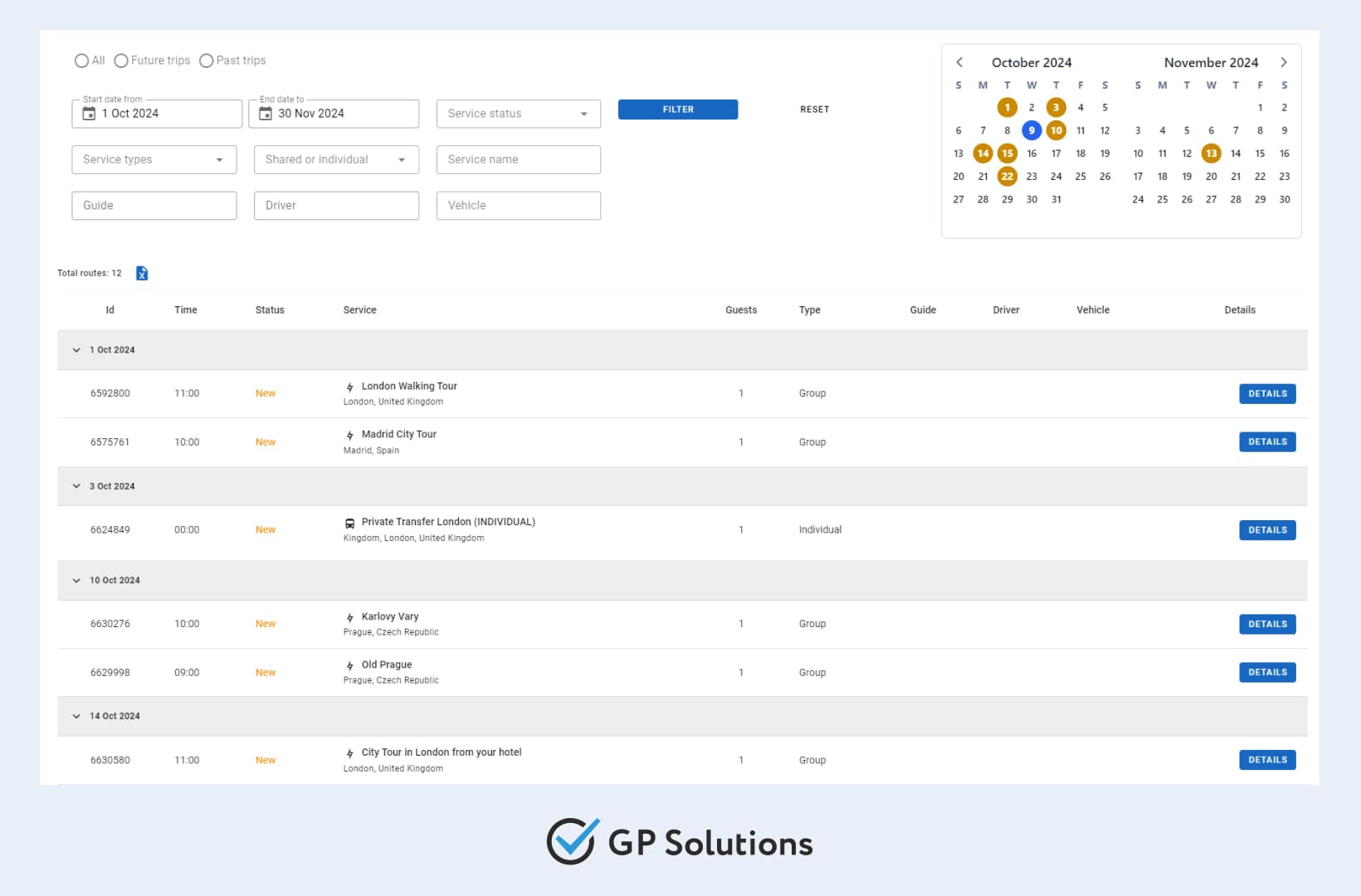
Imagine that with one mouse click you can see how much money each of your partners owe you or how much and when you need to pay to each supplier. One click — and you can browse though all the invoices, payment schedules, online or offline payments. The full landscape of your business’ financial situation — not only at the moment, but in one month, two months, a year. That’s exactly what a robust software solution should look like.
Want to have the best online booking engine? Let us tell you how to get one.
A travel tech solution should walk you through all these steps like a knife through butter, with no need to resort to any additional software.
However, this is just the first step of digitalization. Once you’re through it, your employees will need to click one icon only to do their job. On this one screen that follows the click, they can perform all their daily routine without duplication or anger at a bulky, old-fashioned desktop piece of software that is long overdue with its well-earned retirement.
The concept of e-accounts is all about changes to your conventional approach to CRM (Customer Relationship Management), PRM (Partner Relationship Management), and SRM (Supplier Relationship Management). This extends beyond your internal databases and allows external stakeholders to gain access and take care of their own data.
Within your software, you can grant corresponding accesses for each of your partners. For instance, private clients can view their bookings and travel plans, with no need to inquire for a PDF document from you or send an e-mail. Agencies or corporate clients can browse corporate profiles and agency portals where they can self-book and do virtually everything by themselves. Suppliers, though often reluctant, can also join the system to increase the level of overall involvement.
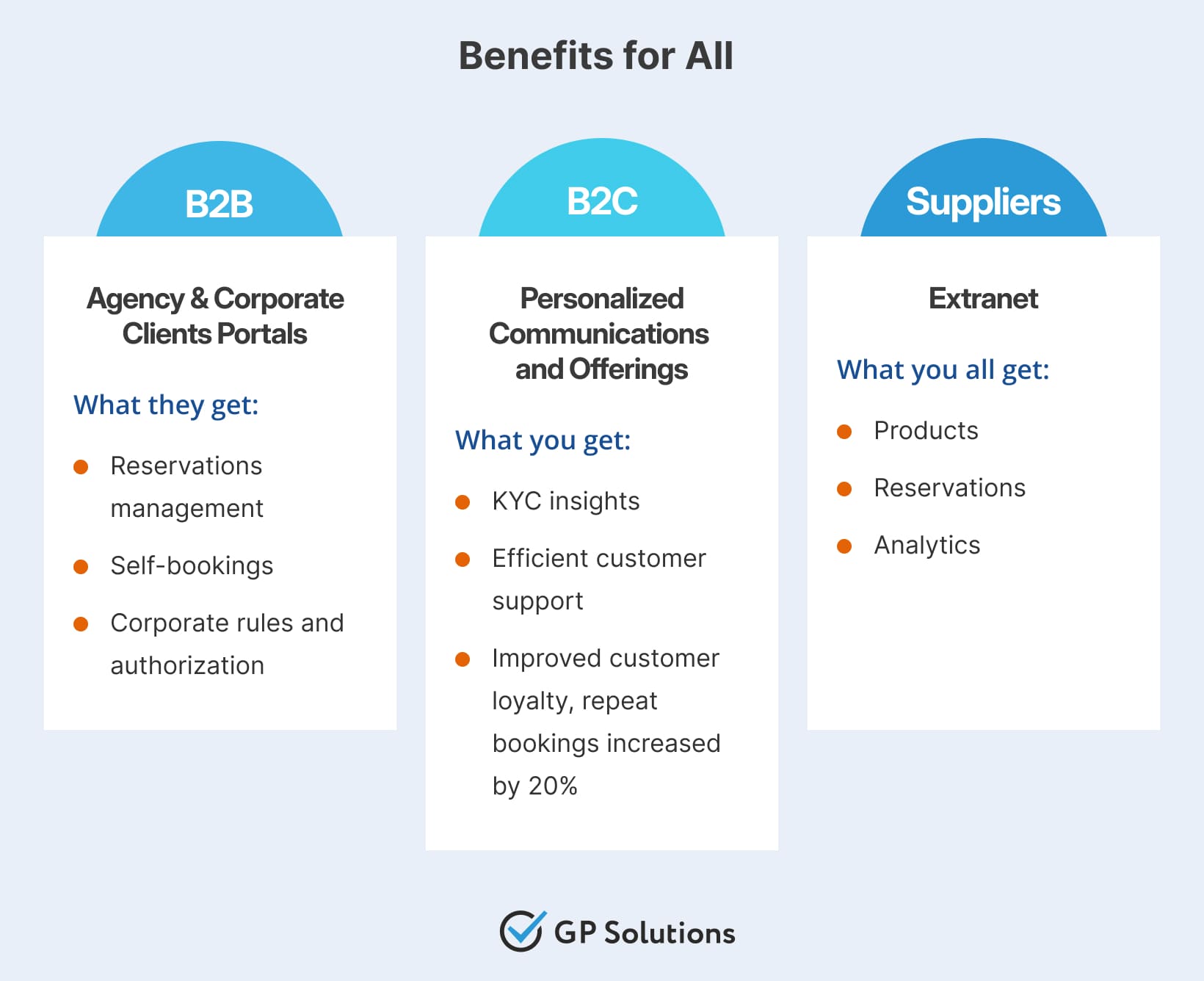
On the 1st level (automation), your personnel did everything for your partners. Conversely, on this 2nd level, they do it by themselves. The easier you make the involvement and onboarding process for stakeholders, the more advanced solution you offer, the higher will be their motivation to join your internal system. If you succeed, you’ll soon notice that online booking engines for travel agencies can be way more efficient than before.
The first and the second levels were all about people — your company, your partners, and your employees. Now, the systems themselves begin to communicate through integration. But in order to get and share information between your and your partners’ systems, you need to build reliable software bridges.
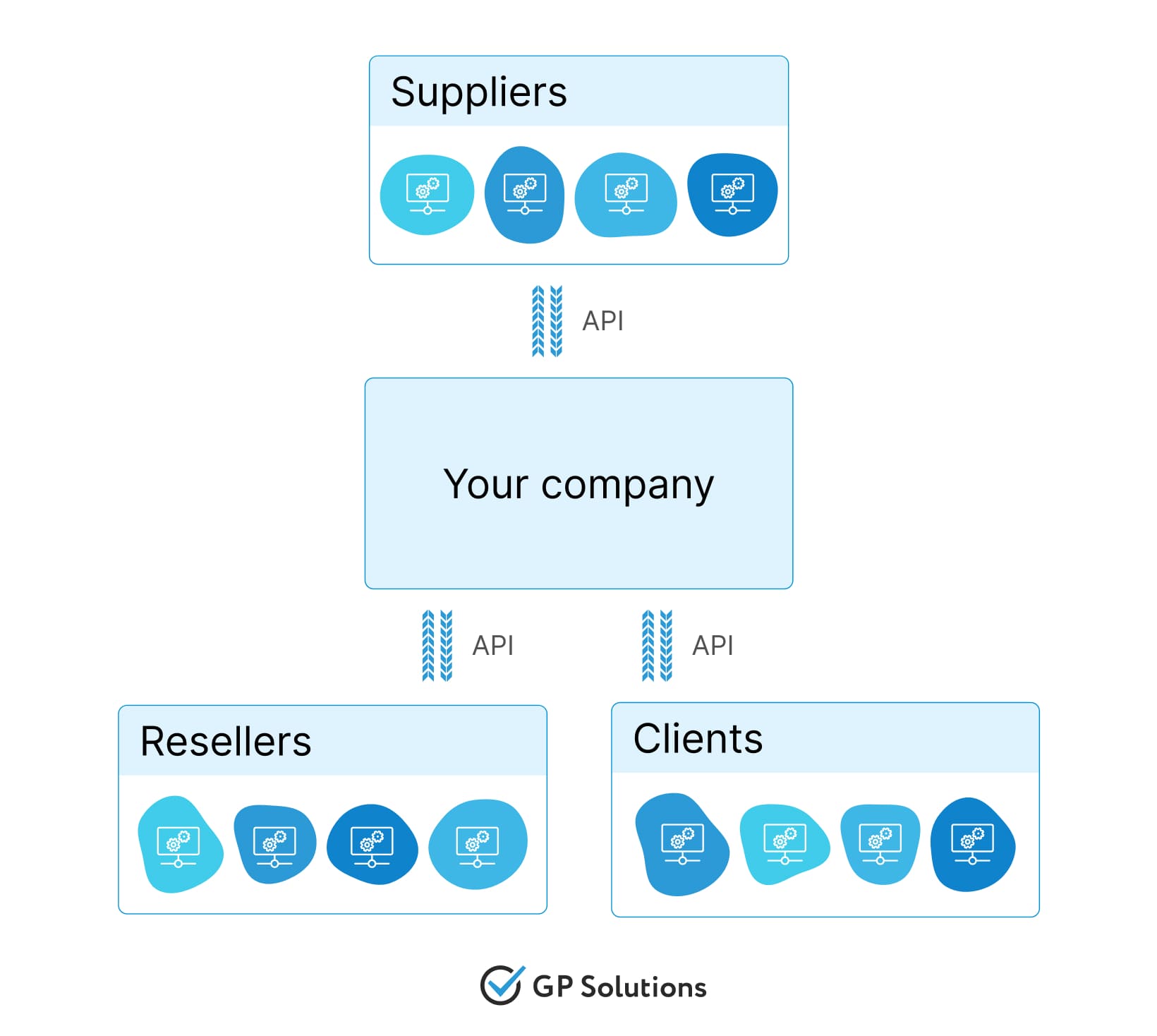
For instance, the integration of your booking system with a hotel’s system allows for automatic price updates and availability checks. In the same way, when you and your partners enter into agreement on special rates or offers, this condition can be input into your software and updated automatically, without manual data entry.
First, it was catalogs, then it was PDFs, Excels, but it all still required manual work. If we automate integration, we will move to the next level of cooperation, as businesses are trying to grow together and build relationships with other companies who have the same level of digitalization. In the future, it will be an important point to consider with whom to make business and whom to have as a supplier or as a partner for your products. Our experience shows that many companies are moving in this direction, and those that do not keep up will struggle to remain competitive.

Do you want to expand your business through partner integrations? Need help in making it technically happen? You’re on the right track.
Each and every booking generates kilobytes of travel-related information from its start to finish — booking data, duration, location, payment method, distribution channels, and so on. Even capturing this information without sophisticated software can be a challenge as it can be spread across multiple channels and systems. Analyzing it far exceeds the scope of normal human beings, yet it would be a shame to lose insights hidden behind loads of data. That is why business intelligence is a must step to convert data into action.
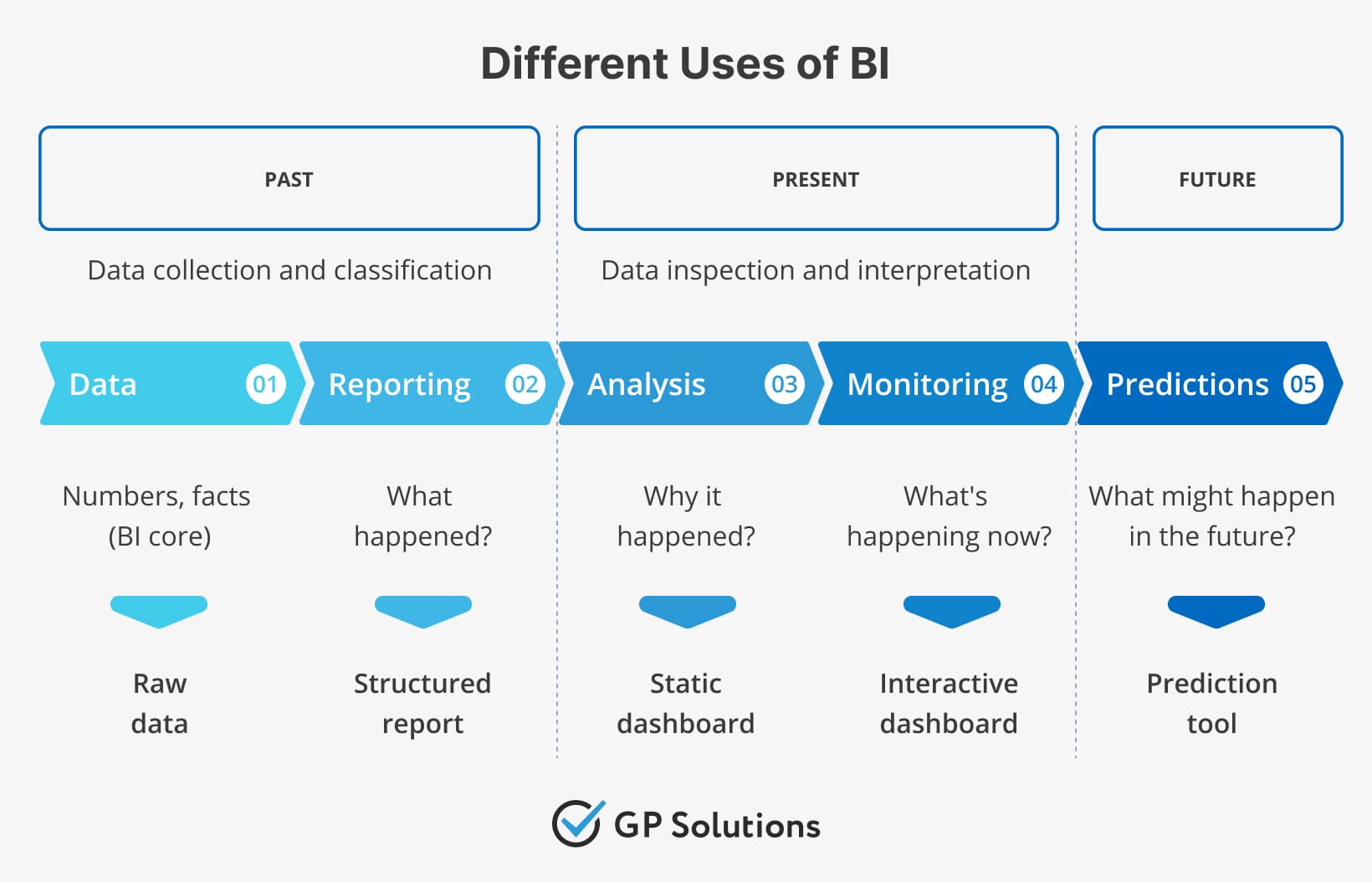
A few straightforward, well-structured, and user-friendly screens can prove how BI brings notable gains for your organization and how it can help drive innovation in the travel industry. Dashboards are a particularly powerful tool for data visualization.
Analytics functionality of GP Travel Enterprise
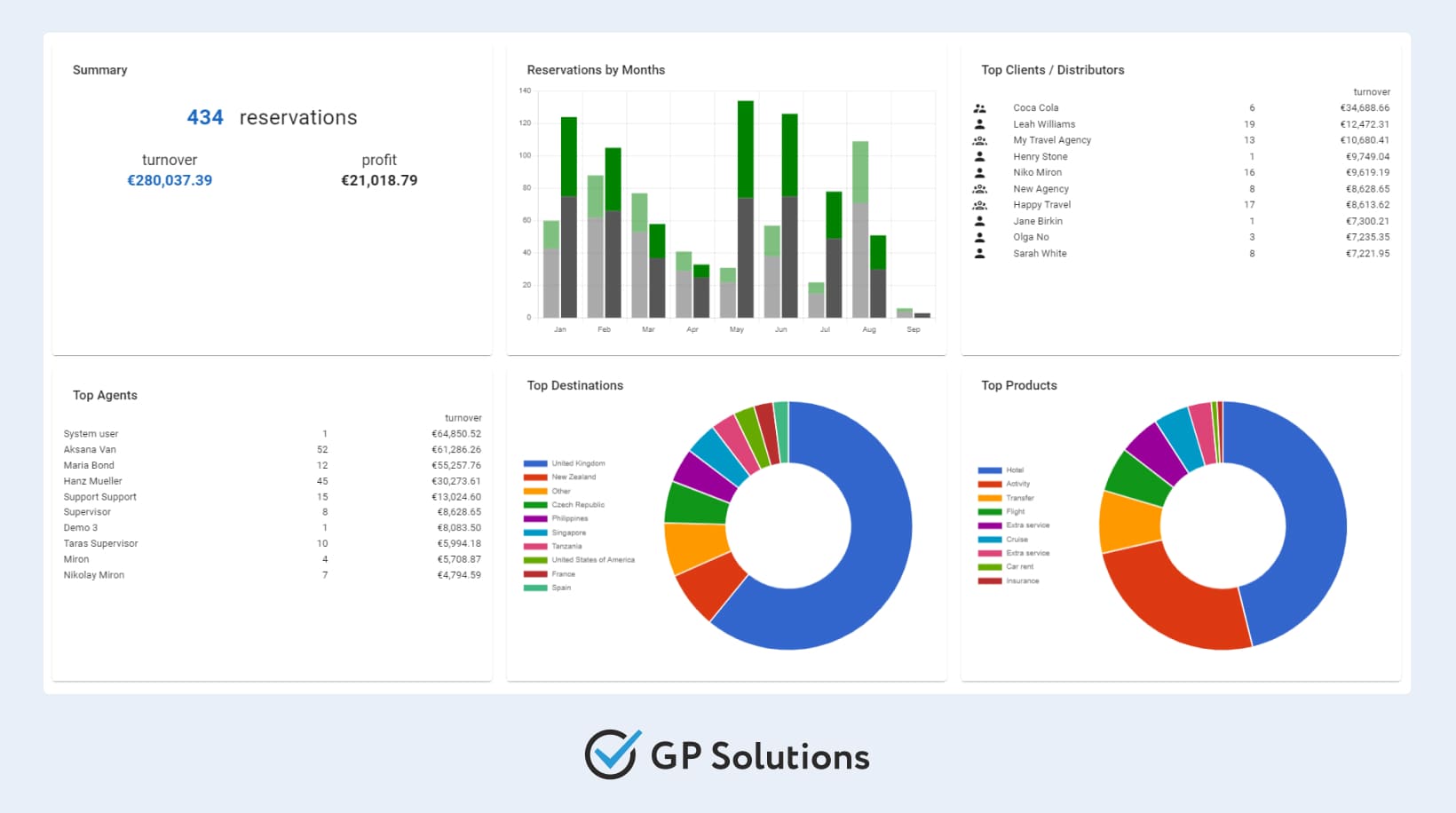
With BI capabilities (especially when powered by AI, as, for example, Amadeus did for hotels), you are going to elevate your operational efficiency, thanks to predictive analytics and insightful decision-making. You’ll be able to detect the most revenue-generating buyer groups, identify the most efficient products and the distribution/sales channels, or adjust the strategy to the increase or decrease in demand.
| What will you get? | What will you be able to do? |
|
|
The integration of BI allows your digital travel solution to automatically identify top clients, eliminating the need for separate, manual analysis that can drag on for weeks. Instead, with a quick glance at the dashboard, you will get insightful findings instantly.
Besides that, BI facilitates dynamic pricing strategies. It can automatically calculate sales data, remaining stock, and the time left before an event and adjust prices accordingly — either raising or lowering them to optimize sales. This mechanism is already widely used in the airline industry, particularly among low-cost carriers, but it can be applied across other sectors.
Before rushing towards AI, you must have a clear understanding of why your company needs it. It is undoubtedly the king of technology trends in the travel industry, but its implementation can be costly and resource-hungry — one should be considerate of its nature.
The main reason most companies want to use AI is to automate mundane tasks, thus optimizing their workforce. If you delegate repetitive tasks to AI algorithms, your staff can pay more attention to more creative and valuable work, e.g., the design and distribution of new products.
Want to get started in AI, but don’t know where to begin? There are two major areas where AI already provides substantial benefits and which are comparatively easy to proceed with:
AI’s ability to take care of routine tasks can greatly reduce the human workload. For instance, in a reservation system, customers frequently forget travel details like flight times, baggage allowances, or voucher information, and tend to bombard concierge services with queries. If you entrust AI with them, what your clients will have to do will be to simply enter their request — such as “When is my flight?” — and AI will instantly provide the answer.
To sum it up, this shift to AI is not just about convenience; it’s not about following business travel technology trends; it’s about efficiency and staying competitive in today’s fast-paced world.
Looking for a Reliable Travel Platform to Add to Your System?
How about taking a look at a demo of our proprietary travel platform designed to run your business hassle-free? It supports multiple integrations and takes care of almost every aspect of any travel business.

Our strong belief — yes, it can. If you strive to go through all the stages of automation using one piece of software (platform), make sure the systems you want to connect to this platform can march to the same beat, i.e., they are seamlessly integrated and can communicate with each other in an automated mode. Do not forget about the user’s perspective. Regardless of all the technical complexities, your solution of choice should be easy to use with no stress attached.
You are not the only one seeking simple software and an effective travel booking management system. There are already solutions out there that can cater to your needs. In case of doubt, you can always resort to travel tech consulting.
At our company, we offer the GP Travel Enterprise solution, which consolidates everything into one comprehensive platform. For more information, please check the product’s page.
Leave your request
We will contact you shortly
Thank you for your request!
We will get back to you as quickly as possible
Get latest insights
from our travel tech experts!
Join 200+ travel fellows! Get GP Solutions' latest articles straight to your inbox. Enter your email address below:
Thank You!